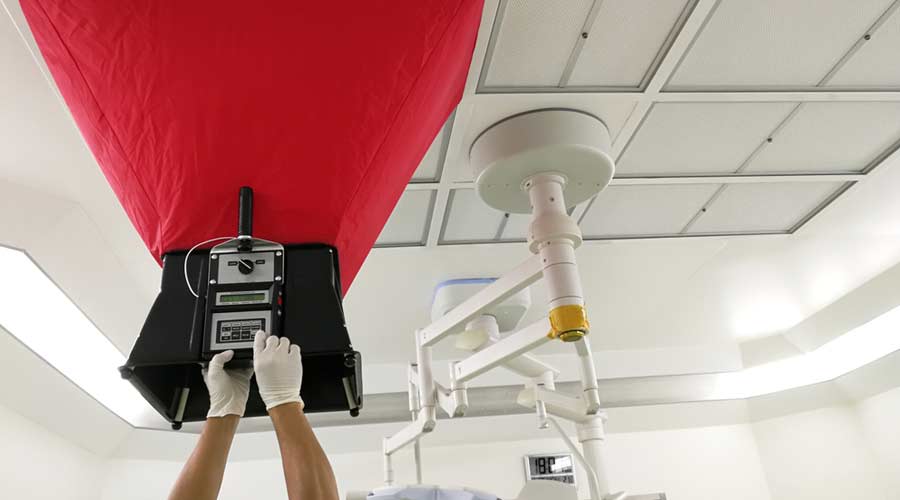The efforts of facility managers in hospitals and other healthcare facilities to maximize the performance of air filtration and ventilation systems in fighting the spread of the coronavirus got some very high-profile support recently — The White House.
The White House recently published a blog post describing the virus as primarily transmitted through aerosols — small, tiny airborne particles, according to the Center for Infectious Disease research and Policy at the University of Minnesota.
Some experts around the world have been arguing that point for years and have advocated for respirator use and enhanced ventilation systems, but this is the first time the White House has formally acknowledged that aerosol transmission has been the primary driver of the COVID-19 pandemic. It has turned away from the language used by the Centers for Disease Control and Prevention (CDC).
"This is a huge first step," says David Michaels, PhD, epidemiologist and professor at the George Washington University School of Public Health. "It's worth noting there is no mention of droplets in the blog post. The word is not even in there." Though the CDC has mentioned the possibility of aerosol transmission, it maintains that droplets are the most common route of COVID-19 transmission.
"The CDC still says the science [of aerosol spread] is iffy, still underplays it, despite so much evidence to the contrary," said Lisa Brosseau, ScD, a research consultant at the University of Minnesota's Center for Infectious Disease Research and Policy (CIDRAP), publisher of CIDRAP News. "But even as early as March and April of 2020 we had details of how long the virus remains viable in the air, we had examples from China of finding viral RNA in air filters and air exhaust pipes in patient rooms. It was suggestive it wasn't just on surfaces."
Michaels and Brosseau said the White House stops short of the next obvious conclusion: If aerosol transmission is the dominant way the virus is spread, cloth and surgical masks are inefficient face coverings, and layered mitigation strategies must focus on optimal respiratory protection such as N95 respirators and on ventilation and air quality.

 Healthcare Is the New Retail
Healthcare Is the New Retail Bridgeway Behavioral Health Services Launches Campaign to Renovate Health Center
Bridgeway Behavioral Health Services Launches Campaign to Renovate Health Center Ground Broken for New North Dakota State Hospital
Ground Broken for New North Dakota State Hospital AI Usage for Healthcare Facilities
AI Usage for Healthcare Facilities Ground Broken on Pelican Valley Senior Living Modernization Project
Ground Broken on Pelican Valley Senior Living Modernization Project